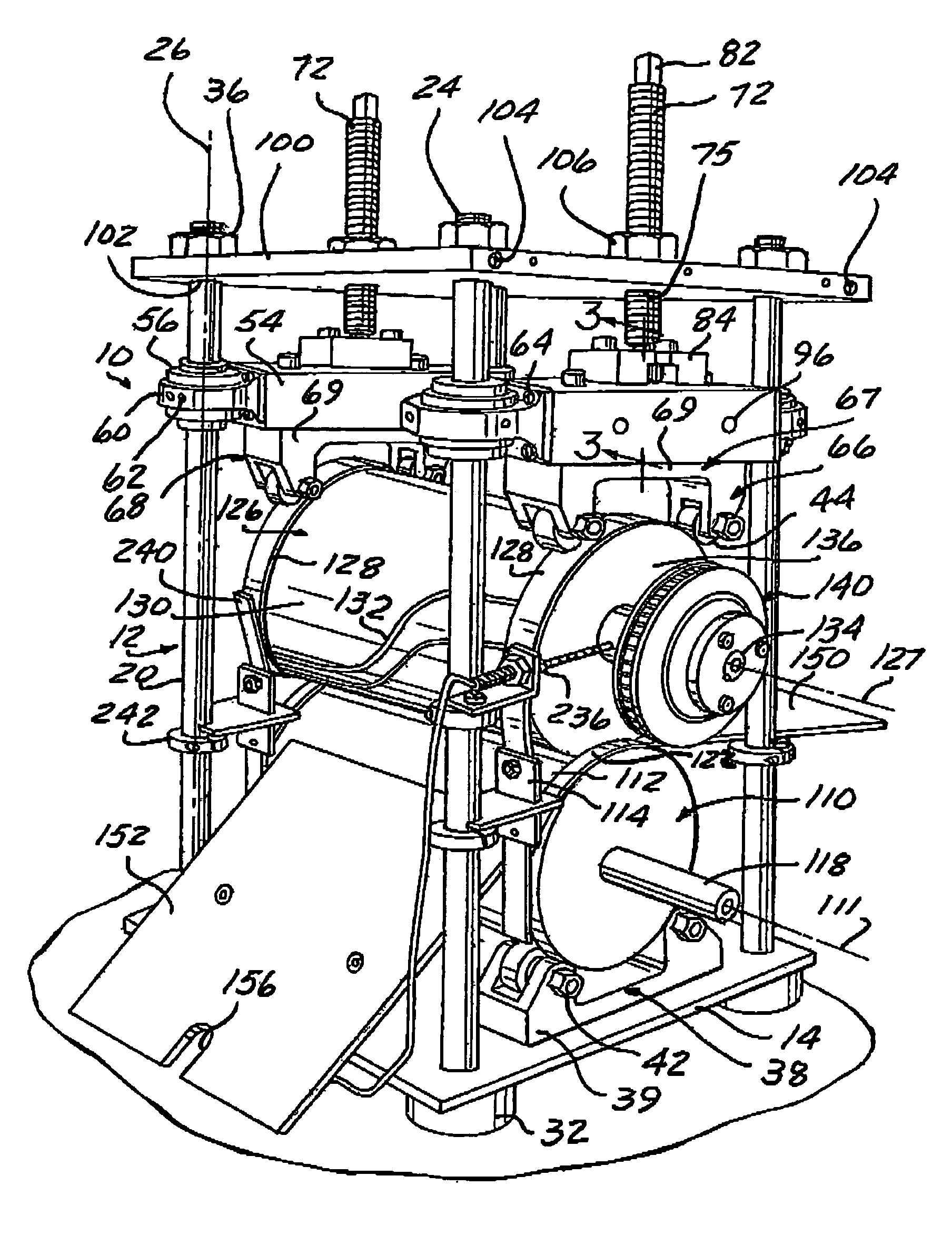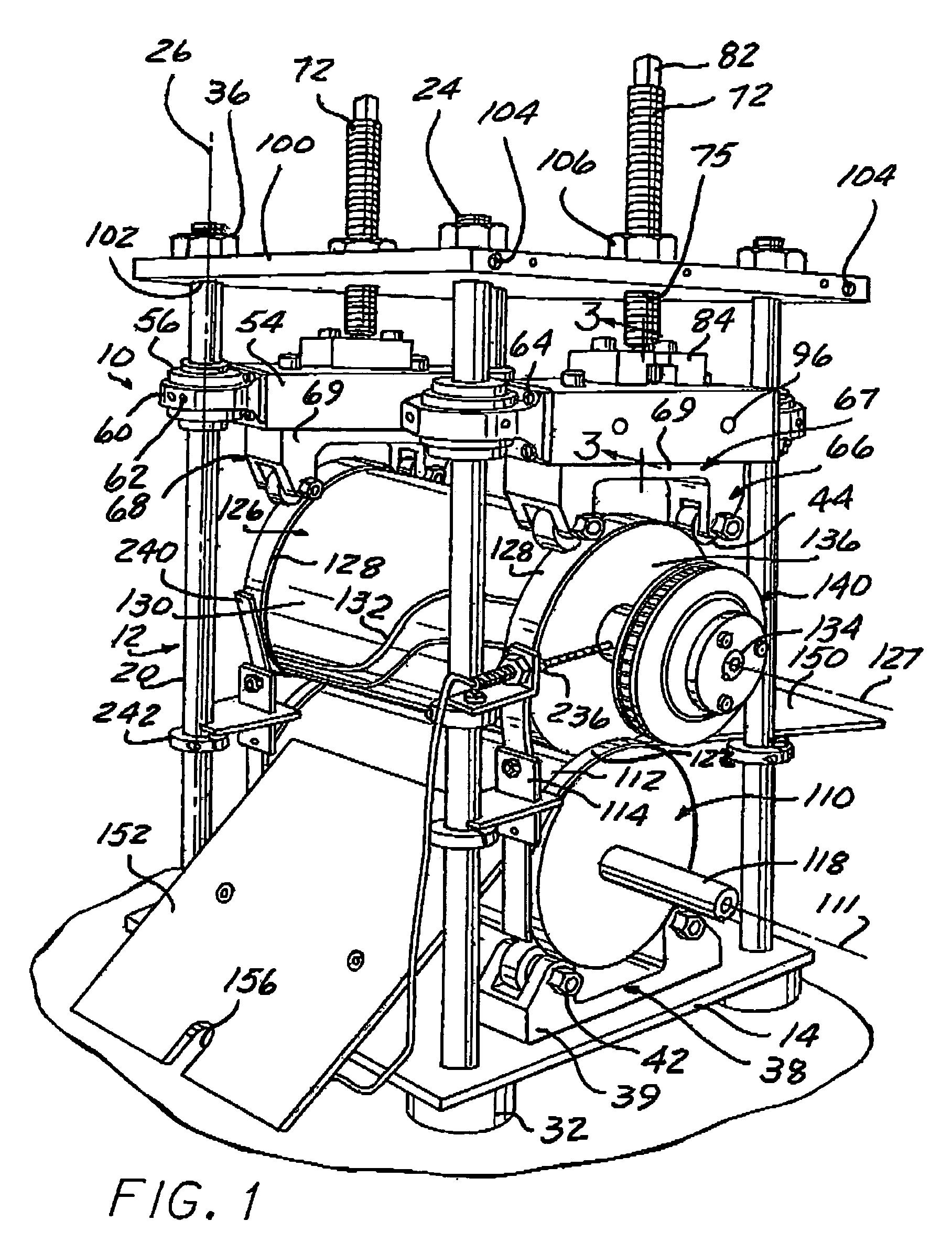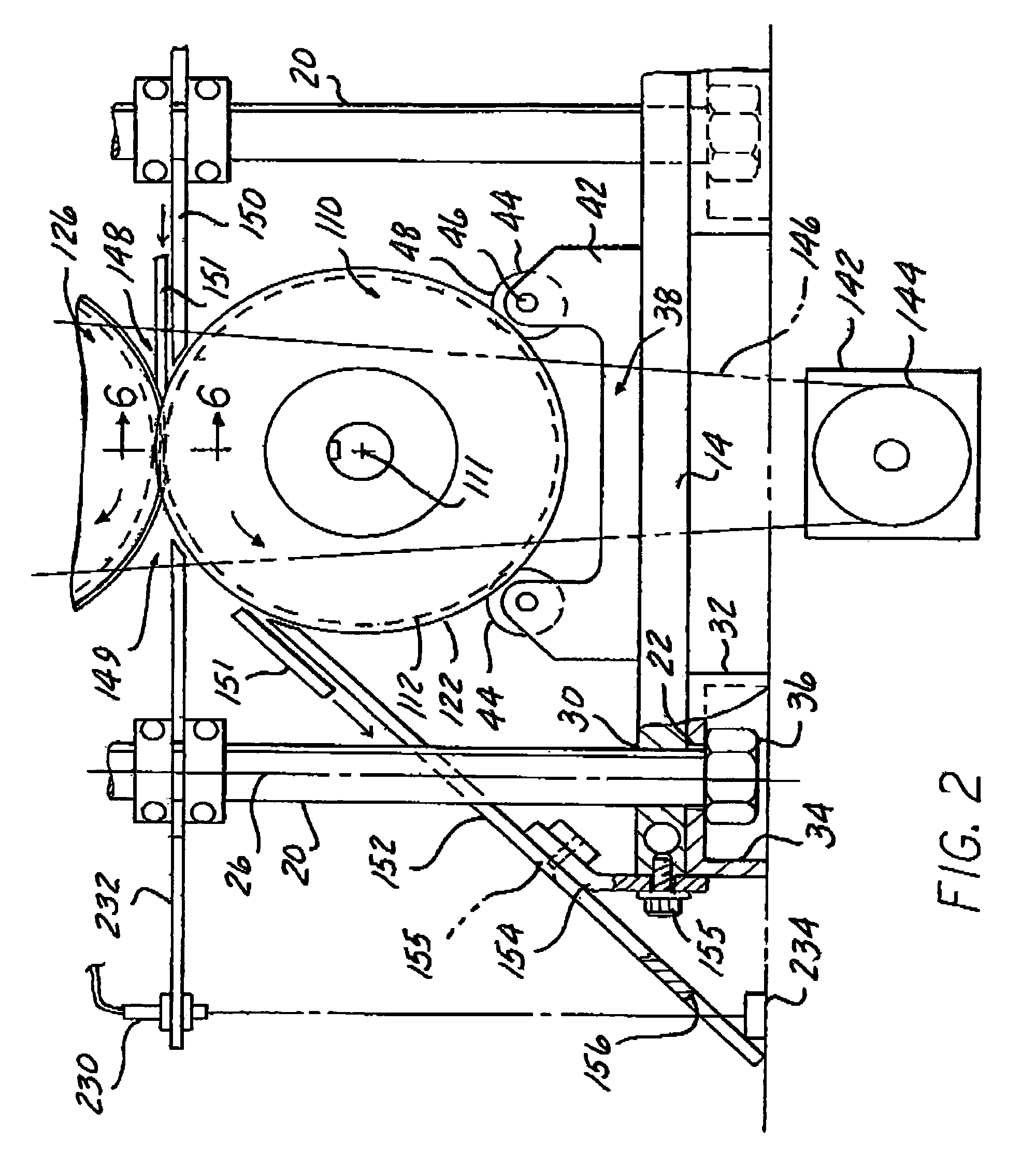Rotary die module
a technology of die module and rotary die, which is applied in the direction of presses, stock shearing machines, manufacturing tools, etc., can solve the problems of lack of adaptability, time and effort, and limitations in prior art modules in adaptability to different die rolls,
- Summary
- Abstract
- Description
- Claims
- Application Information
AI Technical Summary
Benefits of technology
Problems solved by technology
Method used
Image
Examples
Embodiment Construction
[0033]Referring to FIGS. 1 and 2, a rotary die module 10 is illustrated. Die module 10 includes a frame assembly 12 including a base 14, a plurality of columns 20, cross members 54, a first modular die support 38, a second modular die support 66, a first die roll 110, a second die roll 126, and a cover 100.
[0034]The base 14 is illustrated as a substantially rigid plate having a generally square shape. Base 14 includes base supports 32 positioned adjacent to the corners of base 14 to elevate frame assembly 12 above a working surface such as a table or floor to facilitate transporting the die module by hand or mechanical means such as a forklift or overhead hoist. Base 14 may consist of a ferrous or non-ferrous material such as steel, aluminum or other materials exhibiting similar strength and rigidity properties. Base supports 32 may be made from a similar material or, if a reduction in vibration is needed, a dampening material such as rubber or an elastomer. Although shown in a gene...
PUM
| Property | Measurement | Unit |
|---|---|---|
| 90 degree angles | aaaaa | aaaaa |
| speed | aaaaa | aaaaa |
| length | aaaaa | aaaaa |
Abstract
Description
Claims
Application Information
 Login to View More
Login to View More - R&D
- Intellectual Property
- Life Sciences
- Materials
- Tech Scout
- Unparalleled Data Quality
- Higher Quality Content
- 60% Fewer Hallucinations
Browse by: Latest US Patents, China's latest patents, Technical Efficacy Thesaurus, Application Domain, Technology Topic, Popular Technical Reports.
© 2025 PatSnap. All rights reserved.Legal|Privacy policy|Modern Slavery Act Transparency Statement|Sitemap|About US| Contact US: help@patsnap.com



